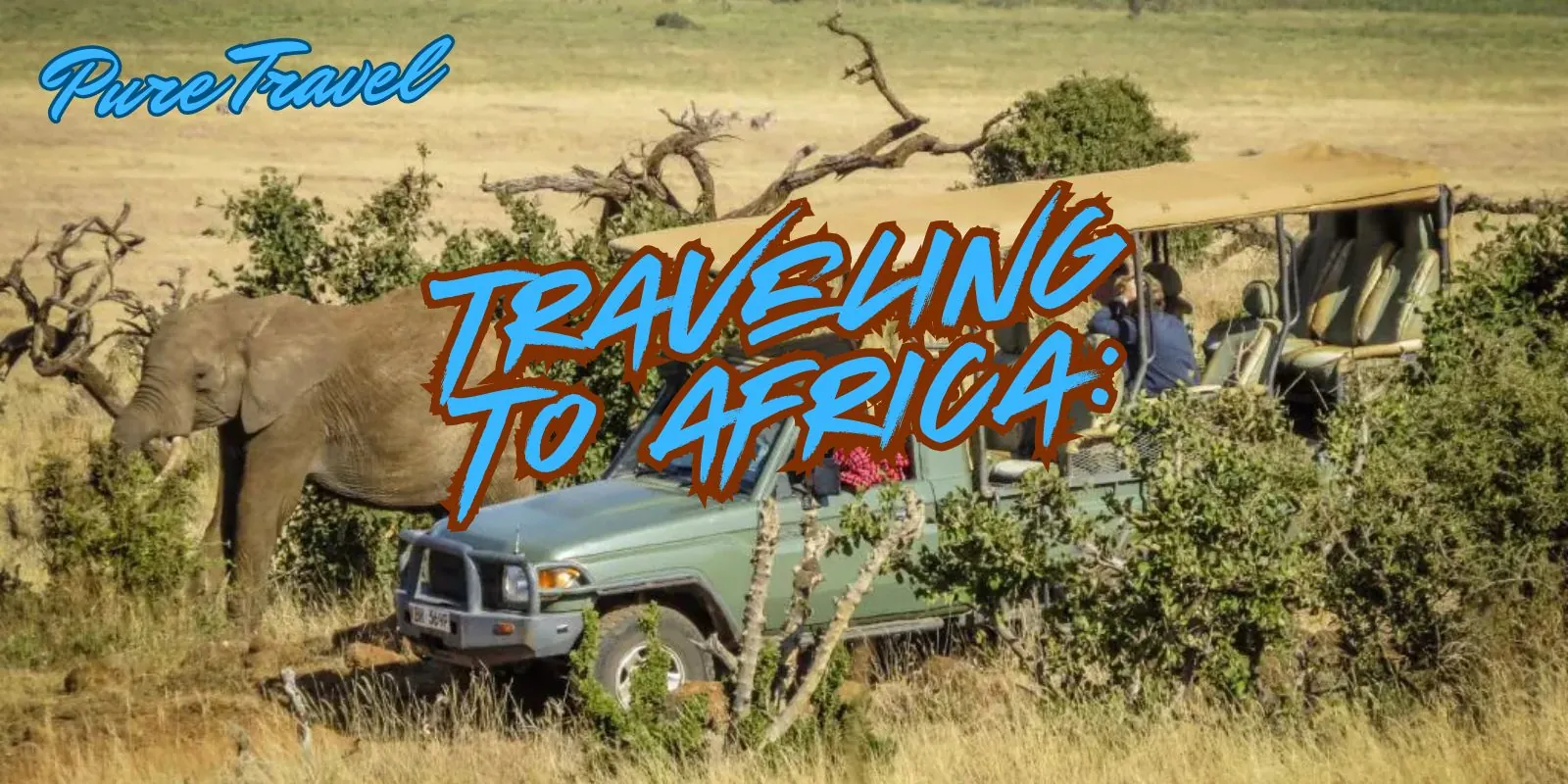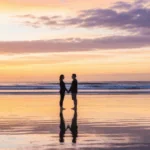Traveling To Africa: Wildlife, Wonders & Wilderness
There’s something truly magical about stepping onto African soil for the first time — the air feels alive with wild energy. Traveling To Africa From golden savannahs to bustling markets, every moment is a sensory adventure. This week, my partner and I began our long-awaited journey through Africa — chasing wildlife, wonders, and the heartbeat of the wilderness.
Arrival in Africa: The Beginning of Our Wild Adventure
Our flight from Sydney to Johannesburg took just over 14 hours, but as soon as the plane descended over the South African plains, exhaustion gave way to awe. The patchwork of golden fields and acacia trees shimmered in the morning light. The warm breeze hit us as we stepped onto the tarmac — thick with the scent of dry grass and sun-warmed earth. It felt like stepping into a dream I’d waited my whole life to live.
Morning: Exploring Johannesburg’s Heritage and Flavours
We started the morning in the heart of Johannesburg — a city that blends Africa’s past and future. We joined a self-guided walking tour through Maboneng Precinct, an area reborn from warehouses into colourful art galleries and cafés. Street musicians filled the air with vibrant rhythms of marimba and drums, and murals told stories of unity and hope. The smell of roasted coffee and spicy chakalaka drifted from food stalls, making it impossible to resist a quick snack.
We ordered vetkoek — fried bread stuffed with curried mince — from a cheerful vendor who shared stories about his childhood in Soweto. It cost about 40 ZAR (roughly AUD $3), and the taste was pure comfort: warm, savoury, slightly sweet from the dough. My partner laughed as we licked our fingers clean under a bright African sun that felt stronger than anywhere else we’d been.
Afternoon: Safari Dreams Come True -Traveling To Africa
By midday, we drove our rented 4×4 north toward Pilanesberg National Park — a journey of about three hours through changing landscapes. The road curved past wide grasslands, small villages, and distant mountains. Every few kilometres, we’d pass a roadside stand selling biltong, mangoes, or wood carvings. As we entered the park, the air grew still — heavy with the hum of cicadas and the earthy smell of acacia trees.
Our first self-drive safari was surreal. Within minutes, we spotted a herd of elephants bathing in a muddy watering hole, their trunks spraying water into the air. A family of zebras crossed the road in front of us, their stripes glowing in the golden light. But the real moment of awe came when we saw a lone lion resting under a thorn tree, his mane rippling in the breeze. My heart raced as we sat in silence, watching Africa unfold before us.
Evening: Sunset Over the Savannah
As dusk painted the sky in shades of orange and violet, we drove to our lodge overlooking the plains. Dinner was a traditional South African braai — grilled meats, pap (maize porridge), and a rich tomato relish. The smoky scent of firewood mingled with laughter and stories from other travellers. A local musician played the djembe softly in the background while the stars began to appear — brighter and closer than I’d ever seen.
We ended the night with a cold Castle Lager (about 35 ZAR / AUD $2.60) and the quiet symphony of crickets and distant animal calls. Africa, in that moment, felt infinite — vast, wild, and deeply humbling.
Pro Traveler Tip: – Traveling To Africa
Always start your safari drives early in the morning or late in the afternoon — that’s when animals are most active. Carry binoculars, water, and a good camera, and never leave your vehicle unless you’re in a designated safe area.
Traveler Warning:
Beware of unofficial guides at major parks and city attractions. Always book through verified tour operators or directly at park gates. And remember: keep valuables out of sight when driving through busy areas.
Your African Adventure Awaits
Traveling to Africa isn’t just a journey — it’s a transformation. Every sunrise over the savannah, every shared smile in a village, every starry night reminds you how vast and beautiful the world truly is. Whether it’s your first safari or your tenth, Africa always feels like the first time — untamed, unforgettable, and alive with wonder.
FAQs – Traveling To Africa: Wildlife, Wonders & Wilderness
What regions and experiences does this itinerary cover?
This route typically combines urban culture (e.g., Johannesburg), Big Five safaris (Pilanesberg, Madikwe or Kruger-area reserves), and coastal highlights (Cape Town) — giving a mix of wildlife, city life and beaches.
When is the best time to travel to southern Africa for wildlife viewing?
The dry season (roughly May–October) is generally best for game viewing — vegetation is thinner and animals concentrate around waterholes, improving sightings and photography. :contentReference[oaicite:0]{index=0}
Do I need a visa to enter South Africa?
Visa rules depend on your nationality. Many passport holders (including Australians for short tourist stays) do not need a visa for stays up to 90 days, but entry conditions can change — always check your country’s travel advice and the host country’s immigration site before you go. :contentReference[oaicite:1]{index=1}
Are vaccinations or malaria precautions required?
All travellers should be up to date with routine vaccinations. Malaria risk varies by region — some safari areas require or recommend antimalarial medication. Consult a travel clinic or the CDC/health authority well before departure to get personalised advice. :contentReference[oaicite:2]{index=2}
How safe is travel in these areas and where can I get consular help?
Most visits are safe when you travel with reputable operators and follow local guidance (avoid walking alone at night, secure valuables, follow guide instructions). For country-specific safety advice and consular assistance, consult your government travel advisory (e.g., Smartraveller) before departure. :contentReference[oaicite:3]{index=3}
Are there luggage restrictions for bush/charter flights between camps?
Yes — light-aircraft transfers commonly limit baggage to around 20 kg (44 lb) per person in soft-sided bags in Southern Africa (East Africa limits can be lower). Always confirm exact limits with your operator when you book. :contentReference[oaicite:4]{index=4}
Is this trip family-friendly and suitable for first-time safari-goers?
Yes — many lodges and reserves welcome families and first-timers. Activities can be tailored (shorter drives, child-friendly times). Check child-age policies for walking safaris, mokoro rides or night drives before booking.
What should I pack for a mixed safari + city trip?
Pack neutral-coloured layers for game drives, a warm jacket for cold mornings, sun protection (hat, sunscreen, sunglasses), binoculars, a good zoom lens if you photograph wildlife, soft-sided luggage for bush flights, and basic meds/first-aid. Don’t forget copies of important documents and travel insurance details.
What should I expect at border crossings on multi-country itineraries?
Border crossings (e.g., Kazungula) can be busy and sometimes slow. Keep passports handy, check visa/entry requirements for every country on your route, carry small local bills for minor fees or tips, and allow extra time in your schedule for immigration formalities.







